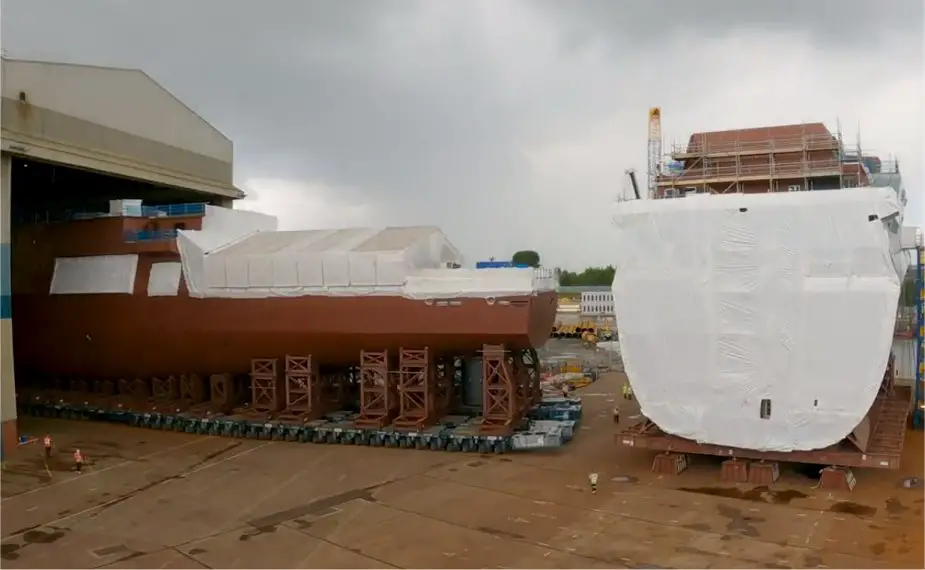Breaking news
BAE Systems achieves landmark moment as HMS Cardiff components unite.
According to information published by BAE Systems on July 17, 2023, the two primary components of HMS Cardiff, the second Type 26 frigate, seamlessly united into a single structure.
Follow Navy Recognition on Google News at this link
 The two primary components of HMS Cardiff. (Picture source: BAE Systems)
The two primary components of HMS Cardiff. (Picture source: BAE Systems)
The Type 26 frigates are designed to replace the Type 23 ASW frigates and play a crucial role in the Royal Navy's capabilities. These frigates are specifically built to support joint and multinational operations, encompassing diverse missions like counter-piracy, humanitarian assistance, and disaster relief efforts. They can operate independently for extended durations or as part of a task group.
This class of frigates holds significance as it marks the first naval platform shared among Australia, Canada, and the United Kingdom since the pre-Second World War Tribal-class destroyers.
The program originated in 1998 as the Future Surface Combatant (FSC) and later transformed into the Global Combat Ship in 2010. BAE Systems Maritime - Naval Ships secured a design contract worth £127 million in March 2010.
Technical data
Powered by a CODLOG (Combined Diesel Electric or Gas) configuration, HMS Cardiff is equipped with a Rolls-Royce MT30 gas turbine, four MTU diesel generators, and two electric motors.
This propulsion system enables the frigate to achieve a speed in excess of 26 knots (48 km/h; 30 mph). Additionally, she has a range of over 7,000 nautical miles (13,000 km; 8,100 mi) when operating in Electric-Motor (EM) drive. The frigate has a complement of 118 crew members, with a capacity to support up to 208 personnel if needed.
HMS Cardiff is equipped with state-of-the-art sensor and processing systems, including the Type 997 Artisan 3D radar, Kelvin Hughes Ltd SharpEye navigation radar, Sonar 2087 (towed array sonar), and Ultra Electronics Type 2150 bow sonar.
In terms of armament, HMS Cardiff features a vertical launch system for Sea Ceptor anti-air missiles, with 48 missiles housed in 12 quad-cells. She also has a 24-cell strike-length Mark 41 Vertical Launching System, allowing for potential deployment of Tomahawk, ASROC, and LRASM missiles.
The frigate is equipped with a BAE 5-inch 62-caliber Mk 45 naval gun, two 30 mm DS30M Mk2 guns, two Phalanx CIWS systems, miniguns, and general-purpose machine guns for self-defense.
Furthermore, HMS Cardiff has aviation facilities to support its operations. She can accommodate two helicopters and features a large Chinook-capable flight deck, an enclosed hangar, and facilities for unmanned aerial vehicles (UAVs).























